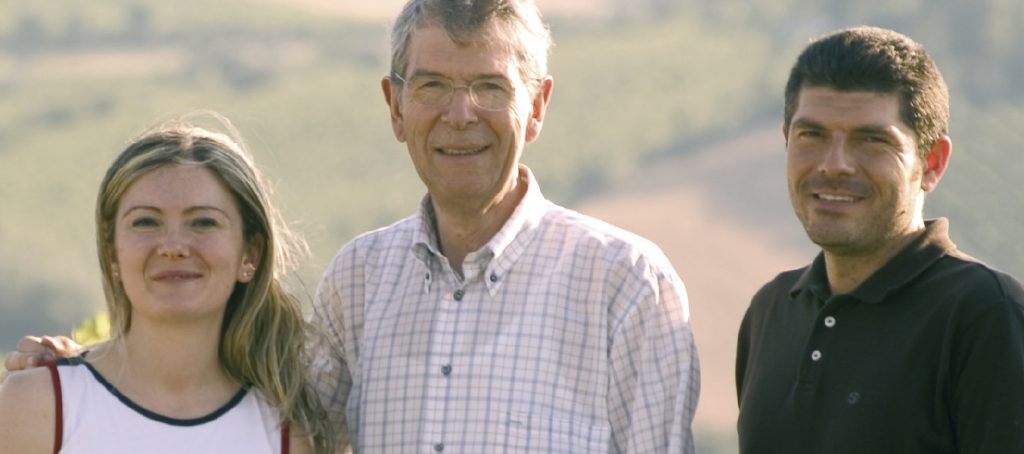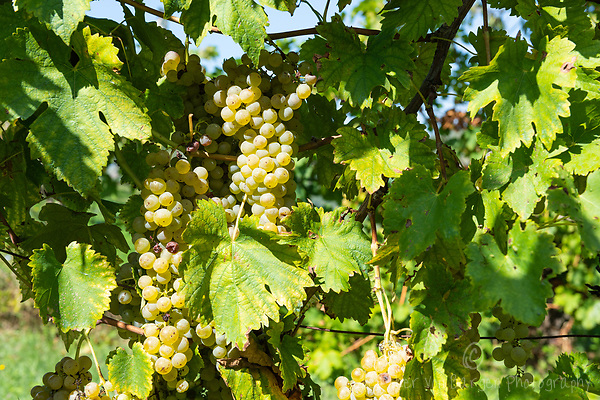
One of our first nights in Le Marche we dined at Seta Cruda, a restaurant famed for its innovative seafood. The owner, Elia, extolled the virtues of Verdicchio, a white wine made in two nearby regions, and wanted us to try one from each area. “Verdicchio from Jesi is influenced by the sea, Verdicchio di Matelica is influenced by the mountains,” he said. “Every time you return, I will have a new Verdicchio for you to try.”
Verdicchio, the wine most identified with Le Marche, has grown here for centuries. In the past it was stored in curvy amphora-shaped bottles. You may recall the mass-produced fish-shaped bottles of Verdicchio? It’s the same grape, but a different wine. Verdicchio can be made into easy-drinking table wines but producers who focus on quality make notable, ageworthy, and complex wines that are worth seeking out. Both the Matelica and Jesi riserva varietals have been awarded DOCG status, Italy’s highest quality designation.
One recent weekend, Matt and I took my aunt and uncle who were visiting for a Verdicchio tasting to discover how the same grape makes different wines thirty miles apart. Our first stop was at Brunori, where we met Cristina Brunori and her father Giorgio. The estate was founded in 1956 by Cristina’s grandfather Mario, who was one of the first in the area to quit selling bulk wine and instead bottle quality wines.
In the climate-controlled cantina their wines ferment in stainless steel and age in huge cement tanks built into the wall. “We don’t want to introduce any flavors to the wine,” she said. Upstairs in the bottling area, they use natural corks in their bottling machine. “Wine is a natural product. We prefer to use a natural closure,” Giorgio said. “Wine is a living thing.”
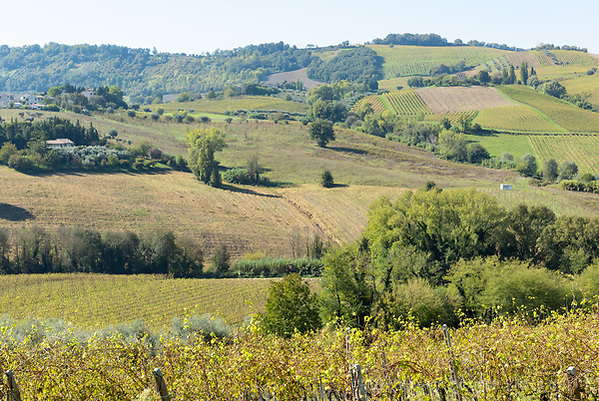
We tried three generously poured Verdicchi in their tasting room, accompanied by breads, meats, and cheeses typical of the region. My aunt and uncle, who normally prefer red wines, liked the Verdicchi. I tasted something unusual at the end of my first sip. “What is that? Nutmeg?” I guessed. Giorgio smiled. A hallmark of a good Verdicchio is a bitter almond finish.
With an alcohol content as high as 14.5%, and a structure to match, these wines are meant to be paired with food. While seafood is the obvious choice, it would stand up to meat. We decided coniglio(rabbit) would be perfect. I asked Cristina for a lunch recommendation. She suggested Vino e Cucina in the nearby walled town of Staffolo and even called them to make sure they were open and had room for us.
Three hours after our arrival, we left Brunori with 18 bottles of the wines we had sampled. At an average price of around €10, their wines typified Le Marche: under-the radar; made by talented artisans; super-high quality, and a great value. I called our next appointment, Bisci, from the restaurant to explain we would be late.
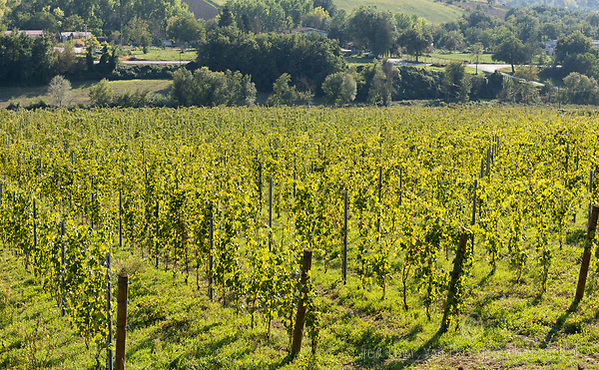
Verdicchio di Matelica’s 300-hectare growing area is almost 10 times smaller than that of Castelli di Jesi, making these Verdicchi less known. Founded by two brothers in 1972, Bisci is also an organic winery, and larger, with around 20 hectares (about 50 acres) of vines. They too, hand-pick their grapes and ferment and age in concrete.
Our tasting was rushed because of our late arrival, but Andrea poured us two whites and two reds. My favorite was a single-vineyard Verdicchio that had aged for more than 12 months in the bottle. Similar to Verdicchi from Jesi, these from Matelica also exhibited the characteristic bitter almond finish. The Bisci Verdicchio had a pronounced green apple flavor, with more minerality. We bought 6 bottles; each label was numbered, one of a limited bottling. After our tasting we wandered the winery to watch their harvest work in progress.
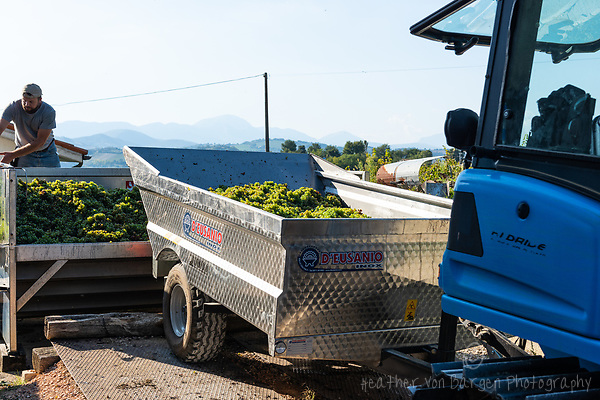
Plots of parallel grapevines are the stripes on the patchwork quilt that is Le Marche’s rolling landscape. Until the 1950s this area had been farmed by mezzadri, sharecroppers who gave half (un mezzo) of their proceeds to the landlord as rent. Their hardworking legacy lives on in the many small wineries that dot Le Marche’s valleys.

